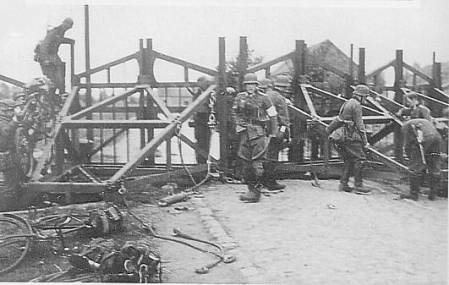KW-Line - Bunker VD11
European politics is dominated by the takeover in 1933 by the Nazis of Germany. In April 1937, both France and Great Britain released Belgium from certain restrictive military obligations. From then on, Belgium will fully opt for investment in and expansion of its defense. One consequence of this is the development of a whole network of different bunker positions, various networks with anti-tank barriers and the reinforcement or even new construction of large fortresses.
Similarly, some bunkers end up on the territory of Kontich. Three are planned, only 2 realized. They are part of the northern stretch of the KW line. The Directorate of Engineering and Reinforcements is drawing two connection points or connection bunkers and one telephone / command bunker in Kontich to enable the connection to the civilian telephone network. The bunkers have no armed function and are not equipped as such.
Each bunker is given a code of one letter or two letters, followed by two
Numbers. In Kontich there are only bunkers with two letters and numbers: VD13 and VD11. The higher the second letter in the alphabet occurs, the further away in the line this construction can be situated. The "A" bunkers are therefore in the first line. The "D" bunkers of Kontich at or after the third and last line.
VD11 in a field at the point where the Nachtegalenstraat crosses the Kon. Astridlaan makes an angle of ninety degrees to the Duffelsesteenweg. This bunker is clearly visible after harvest time.
Both bunkers have a standard structure. They measure 3.30 m at the front and rear (door side) and 2.30 m at the side walls. Inside is a small room that measures only 1.30m by 0.70m. The wall is one meter thick on three sides, on the door side the wall is only 0.60m thick. The maximum height is 2.85m and the roof thickness is between 1 and 1.15m. A steel door forms the solid closure.
On the door side you see three holes on the right. There, field troops could connect their field telephone wires to the large network that was completely underground. A switchboard hangs from the iron construction inside. Iron pipes still stick up from the floor today. On the original plans we find three, while in the bunker VD11 there are only two. Via these pipes the telephone cable bundles came in that could be connected. Parallel to the defense line and behind it walked at a distance of 1,
5 to 3 km a first telephone cable with 25 pairs. Three kilometers further back the same second pair and about every four km a cross-connecting cable was provided between the rear and front telephone cables. Where they crossed, the Belgian Army had a large bunker built that served as a telephone exchange and could also be used as a command bunker. Such a bunker is located in Lint in the Luytens or Wuytjensbos. It is from this bunker C16 that the line via Lint served the two connection points in Kontich. The third bunker, planned as a connection to the civil telephone network, was planned in Kontich-Centrum, somewhere in a backyard along the Witvrouwenveld, roughly behind the former textile shop Tabotex, later supermarket Unic and today the Belfius office. Has time pressure been the reason that the construction plans for this third bunker could not be realized? Or lack of money? Or new ideas? Or, …
On 14 May, the order was given to effectively man the KW-line. The field diary of the 56th German infantry division reports that they are experiencing severe problems at Lier from targeted Belgian fire from that line. As early as May 16, Belgian and friendly troops are ordered to leave the line and withdraw. The Guderian tank division has already broken through around Sedan in France and the Germans can bypass the KW-line in this way.
Reconnaissance unit 25 (Afklärungsabteiling 25) of the 56th German division reports on 17 May 1940 at 2:10 pm that they will arrive in "Contich" and can safely take up positions there.
Do you have more information about this location? Inform us!
Source
- Text: Herman Van Eyndhoven
- Photos: Rudi Rasker
Nearby
Museum
- Stampe & Vertongen Museum - Antwerpen
- Bunkermuseum Antwerpen - Wilrijk
- Dossin Barracks Memorial Museum - Mechelen
Point of interest
- Panel 14 Mortsel Bombing 5 April 1943 - Mortsel
- Panel 16 Mortsel Bombing 5 April 1943 - Mortsel
- Panel 15 Mortsel Bombing 5 April 1943 - Mortsel
Monument
Cemetery
- Belgian War Grave Edegem - Edegem
- Belgian War Graves Boechout - Boechout
- Belgian Graves Veterans Boechout - Boechout
Remembrance Stone
- Stumbling Stones Oudedonklaan 97 - Antwerpen
- Stumbling Stones Cruyslei 88 - Antwerpen
- Stumbling Stones Adelbert Kennisplein 17 - Antwerpen





